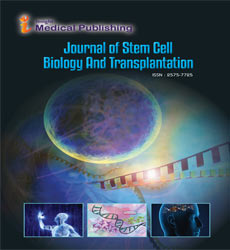ISSN : 2575-7725
Journal of Stem Cell Biology and Transplantation
Establishing an efficient contamination control in Pharmaceutical
Abstract
Sterility is a key quality attribute for a class of medicines required to be sterile. The consequences of non-sterility are direct patient harm. The degree of harm is dependent upon the route of administration and the types and numbers of microorganisms, as well as the health and immune state of the patient. The likely outcomes of the administration of a non-sterile product are disability or death.
For this reason, contamination control is an important part of both sterile and non-sterile pharmaceutical manufacturing, regulators, as signaled by the revised EU GMP Annex 1 and from FDA inspections are increasingly expected the contamination control to be devised and presented as a formal program. This means a detailed, facility-specific contamination control strategy.
Therefore, the objective is to develop a robust program that reviews,assesses and reaffirms strategies for the prevention & remidiation of contamination risks.
This paper sets out the key elements of the strategy. To be effective, this needs to be an approach that can assess seemingly isolated contamination events holistically and which is capable of putting appropriate corrective and preventive actions (CAPAs) in place. This approach signals a new paradigm in terms of contamination control, shifting the risk review process to one that assesses the impact of a contamination
Open Access Journals
- Aquaculture & Veterinary Science
- Chemistry & Chemical Sciences
- Clinical Sciences
- Engineering
- General Science
- Genetics & Molecular Biology
- Health Care & Nursing
- Immunology & Microbiology
- Materials Science
- Mathematics & Physics
- Medical Sciences
- Neurology & Psychiatry
- Oncology & Cancer Science
- Pharmaceutical Sciences
